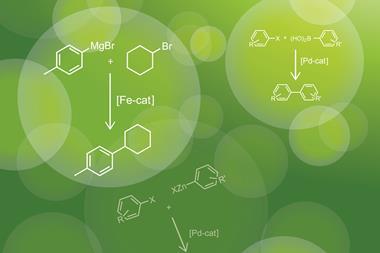A century-old method to distinguish between homogeneous and heterogeneous catalysts – known as the mercury drop test – is wrong in many cases, Russian researchers have concluded. In reactions thought to be impossible, mercury gives false positives for many palladium catalysts.
First used in 1919, the mercury drop test checks if a metal catalyst is sensitive to mercury poisoning – the catalyst is deactivated as an inactive compound forms. While homogeneous catalysts aren’t affected, mercury suppresses metal particles’ reactivity as it amalgamates on their surface.
If a metal-catalysed reaction stops in the presence of mercury, the catalyst must be heterogeneous – at least this is what chemists thought. But it turns out that this is a myth, as a team led by Valery Dunina from Lomonosov Moscow State University has revealed. With some palladium catalysts, the test gets it wrong.
Mercury, the team found out, reacts with azapalladacycles – catalysts in which a palladium(II) is flanked by a carbon and a nitrogen atom. Although palladacycles are generally homogeneous catalysts, the mercury drop test identifies them as heterogeneous
In a redox–transmetallation, the mercury replaces the palladium and deactivates the catalyst – a reaction thought impossible. The researchers point out that reports of similar reactions existed but were regarded as unlikely oddities.
To avoid false positives, Dunina and colleagues recommend chemists do control experiments with their catalyst and liquid mercury. Mercury compounds, they show, can be isolated, and identified by nuclear magnetic resonance and x-ray crystallography.
References
O N Gorunova et al, Organometallics, 2018, 37, 2842 (DOI: 10.1021/acs.organomet.8b00363)

















No comments yet